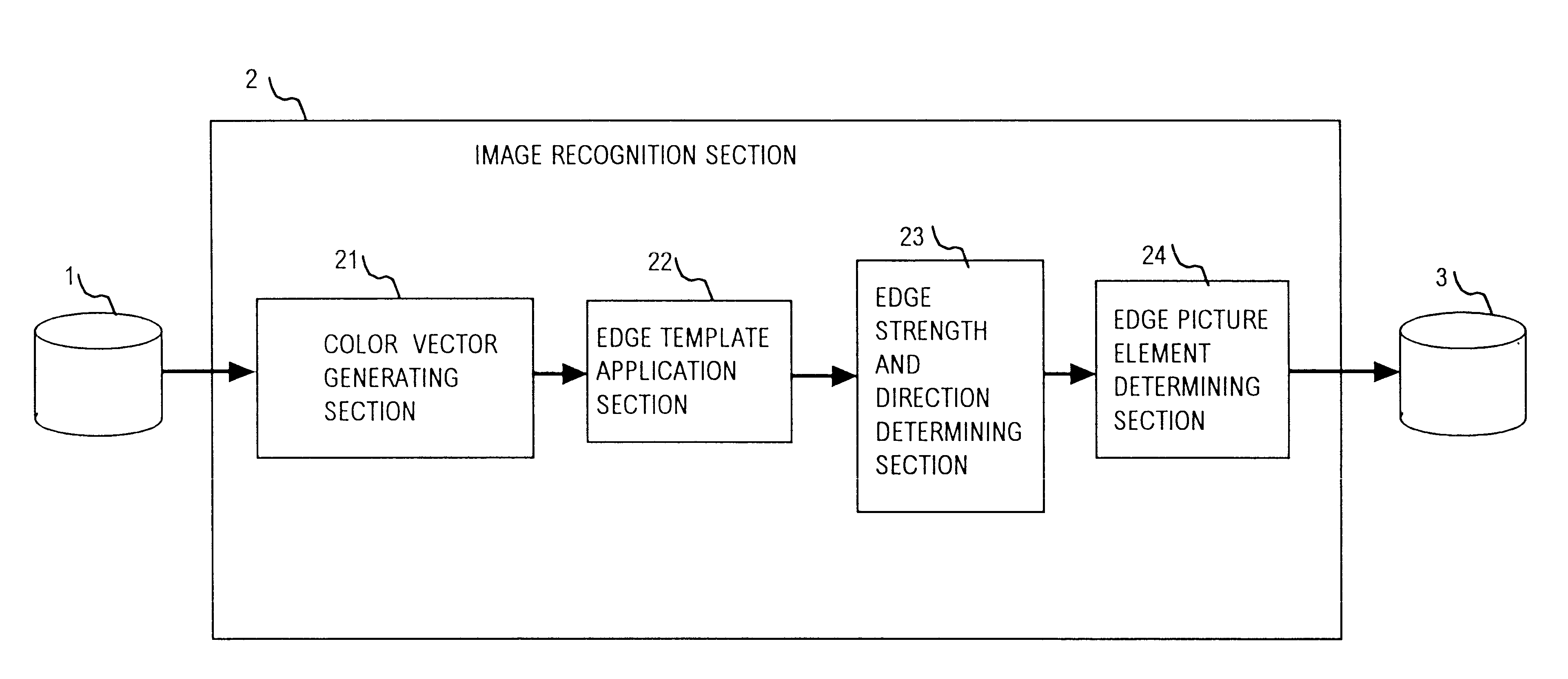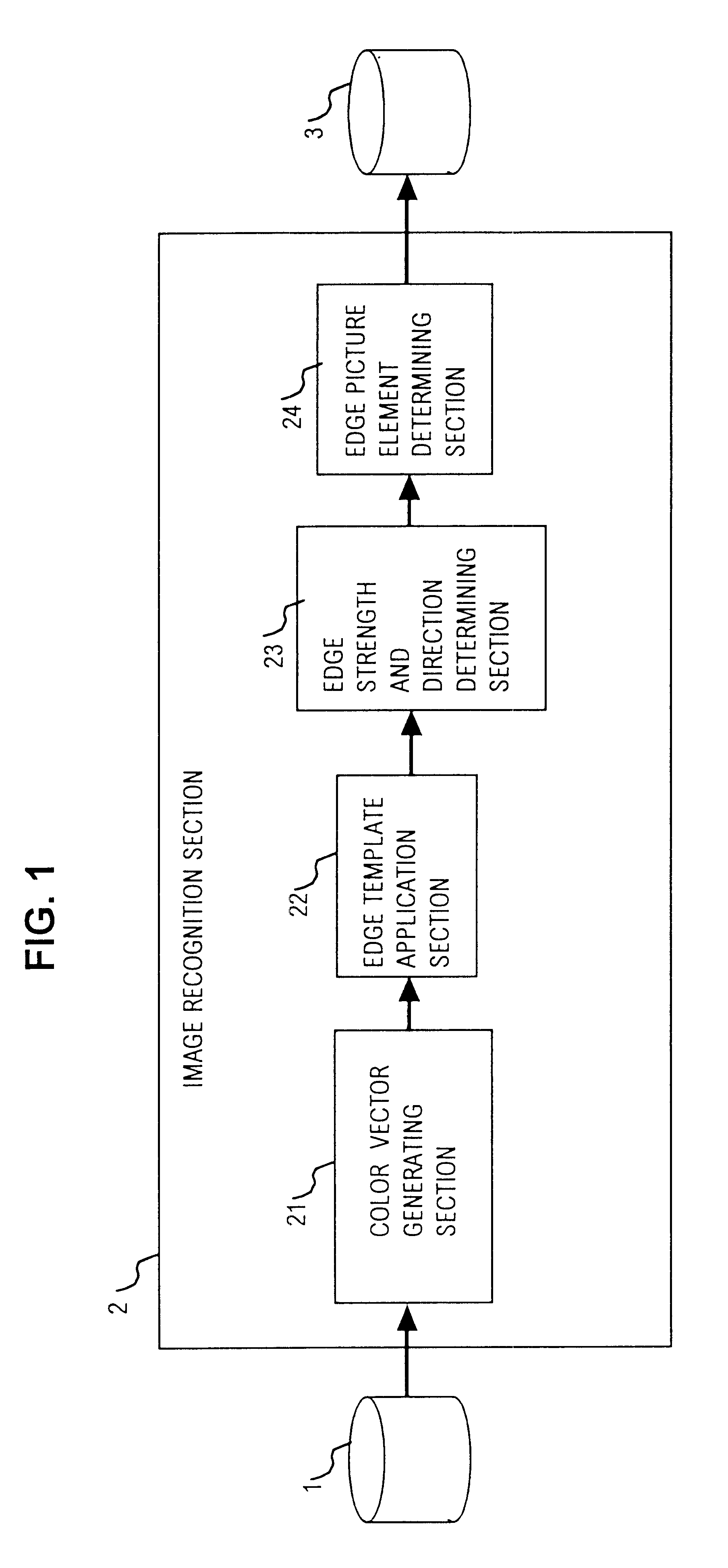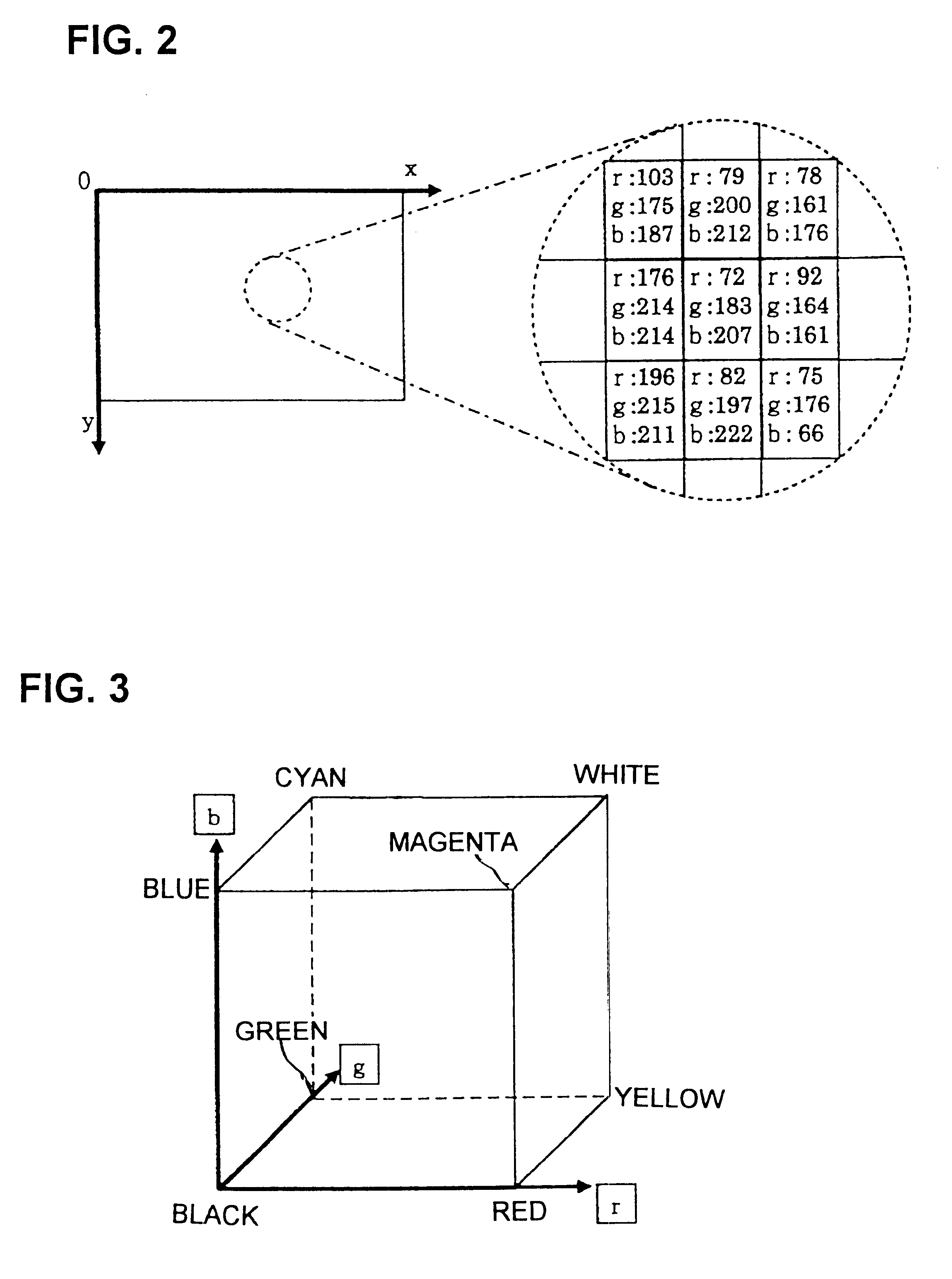Image recognition method and apparatus utilizing edge detection based on magnitudes of color vectors expressing color attributes of respective pixels of color image
a color image and image recognition technology, applied in image enhancement, image analysis, instruments, etc., can solve the problems of inability to apply prior art methods of improving accuracy, difficult application of image recognition to satellite images or aerial photographs, and complex image contents
- Summary
- Abstract
- Description
- Claims
- Application Information
AI Technical Summary
Benefits of technology
Problems solved by technology
Method used
Image
Examples
first embodiment
an image recognition apparatus according to the present invention will be described referring to FIG. 1. As used herein in referring to embodiments of the invention, the term "image recognition" is used in the limited sense of signifying "processing the data of an original color image to derive shape data, i.e., data of an edge image which expresses only the outlines of objects appearing in the original color image". The apparatus is formed of a color image data storage section 1 which stores the data of a color image that is to be subjected to image recognition processing, an image recognition processing section 2 which performs the image recognition processing of the color image data, and a shape data storage section 3 which stores shape data expressing an edge image, which have been derived by the image recognition processing section 2.
The image recognition processing section 2 is made up of a color vector data generating section 21, an edge template application section 22, an ed...
second embodiment
an image recognition apparatus according to the present invention is shown in the general system block diagram of FIG. 15. Here, sections having similar functions to those of the apparatus of the first embodiment shown in FIG. 1 are designated by identical reference numerals to those of FIG. 1. In the apparatus of FIG. 15, the color vector data generating section 121 performs a similar function to that of the color vector data generating section 21 of the first embodiment, but in addition receives control parameter adjustment data, supplied from an external source as described hereinafter. In addition, the apparatus of FIG. 15 further includes a color space coordinates conversion section 25 is for performing color space coordinate transform processing. The data stored in the image data storage section 1, which in the same way as described for the first embodiment will be assumed to directly represent a color image as sets of r, g, b values that are coordinates of an RGB color space,...
third embodiment
an image recognition apparatus according to the present invention will be described. The apparatus configuration is identical to that of the second embodiment (shown in FIG. 15).
The basic operation sequence of this embodiment is similar to that of the second embodiment, shown in FIG. 16. However with the third embodiment, the transform is performed from an RGB color space to an HSI color space, instead of the color space of FIG. 17. That is to say, steps 11, 12 and 13 are identical to those of the first embodiment, however step 20 is performed as follows. Step 20: each pixel value is transformed from the RGB color space to the coordinates of the cylindrical color space shown in FIG. 20. Each set of pixel values r(x, y), g(x, y), b(x, y) is operated on, using equation (9), to obtain a corresponding set of hue, saturation and intensity values as h(x, y), s(x, y) and i(x, y) respectively of the HSI color space of FIG. 20. In this case, the gray-scale values, i.e. values of intensity ex...
PUM
 Login to View More
Login to View More Abstract
Description
Claims
Application Information
 Login to View More
Login to View More - R&D
- Intellectual Property
- Life Sciences
- Materials
- Tech Scout
- Unparalleled Data Quality
- Higher Quality Content
- 60% Fewer Hallucinations
Browse by: Latest US Patents, China's latest patents, Technical Efficacy Thesaurus, Application Domain, Technology Topic, Popular Technical Reports.
© 2025 PatSnap. All rights reserved.Legal|Privacy policy|Modern Slavery Act Transparency Statement|Sitemap|About US| Contact US: help@patsnap.com



